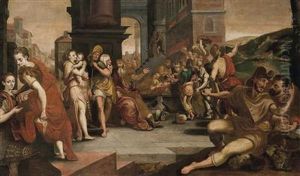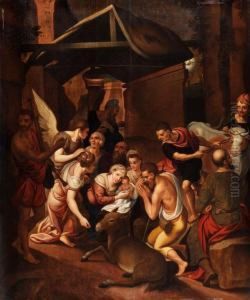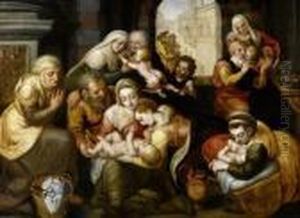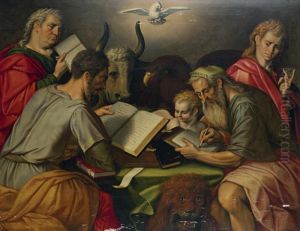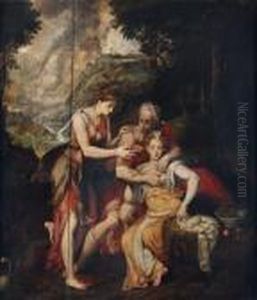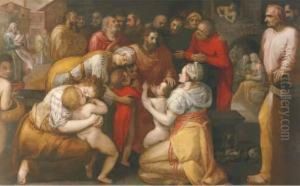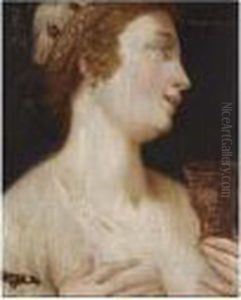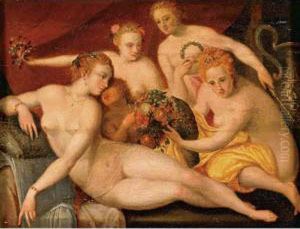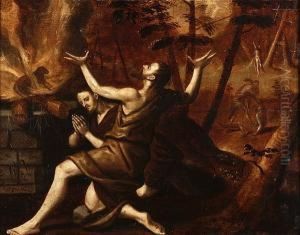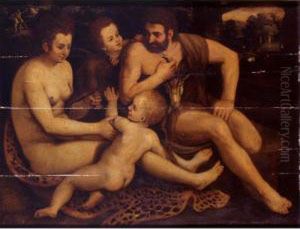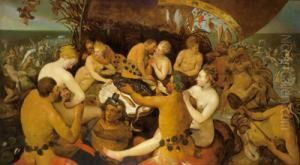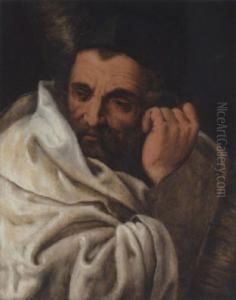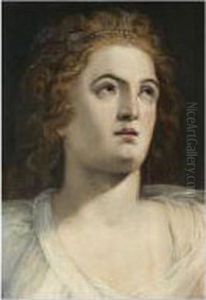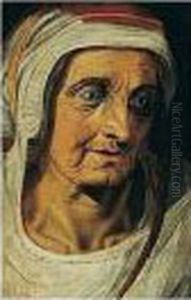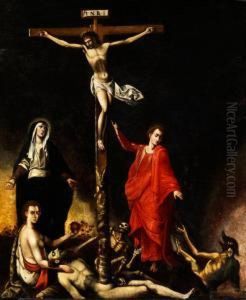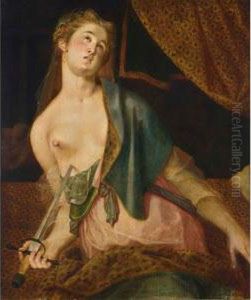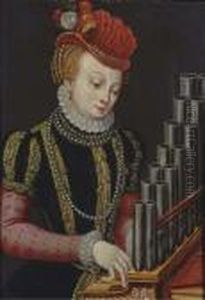Frans I Vriendt (Frans Floris) Paintings
Frans I Vriendt, better known as Frans Floris or Frans Floris de Vriendt, was a prominent Flemish painter during the Renaissance period. Born in Antwerp, he is one of the most important Northern Mannerist artists and had a significant influence on the development of the Antwerp school. He was the son of a stonecutter and began his artistic journey under the tutelage of several minor artists before traveling to Italy, which was a common practice among artists seeking to refine their craft at the time.
His stay in Italy, particularly in Rome, had a profound impact on his artistic style. During his time there, he absorbed the influences of Italian Renaissance masters, especially the works of Michelangelo and Raphael. His exposure to the Italian grandeur and his study of classical sculpture helped him develop a style characterized by dynamic compositions, muscular figures, and a dramatic use of light and shadow, which was relatively new to the artistic landscape of the Low Countries.
Upon returning to Antwerp around 1545, he established his workshop, which became a training ground for many young artists. Floris' workshop was one of the most sought-after in the city, and he played a crucial role in disseminating Italian Renaissance ideals in Northern Europe. His work includes mythological scenes, religious subjects, and portraits. Some of his notable works are 'The Fall of the Rebel Angels' and 'The Judgment of Paris.'
Frans Floris' approach to painting emphasized a refined elegance and often employed allegorical elements. His figures are noted for their grace and sensuality, which was a stark contrast to the more austere and Gothic traditions prevalent in Flemish art prior to his influence. He also had a penchant for including intricate details and lush color palettes in his work, which added to the visual richness of his paintings.
Tragically, Frans Floris' life came to an untimely end due to a bout with alcoholism, which led to his death in 1570. Despite his personal struggles, his legacy lived on through his brother, Cornelis Floris, who was an accomplished sculptor and architect, and through the many students he trained, such as Martin de Vos and Hendrick van Balen. Frans Floris left behind a body of work that marked a transition in Northern art and heralded the Baroque style that would dominate the following century.



